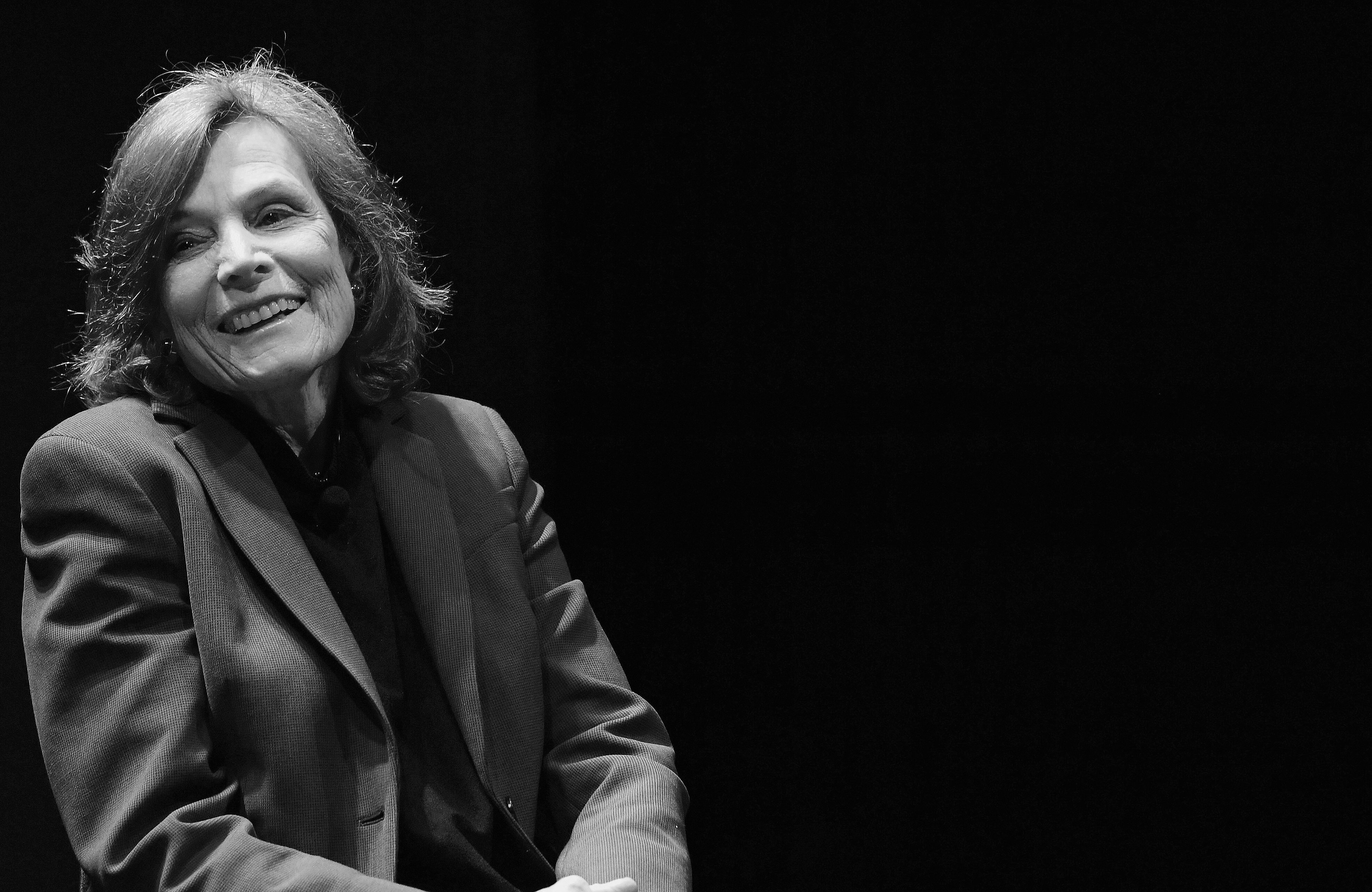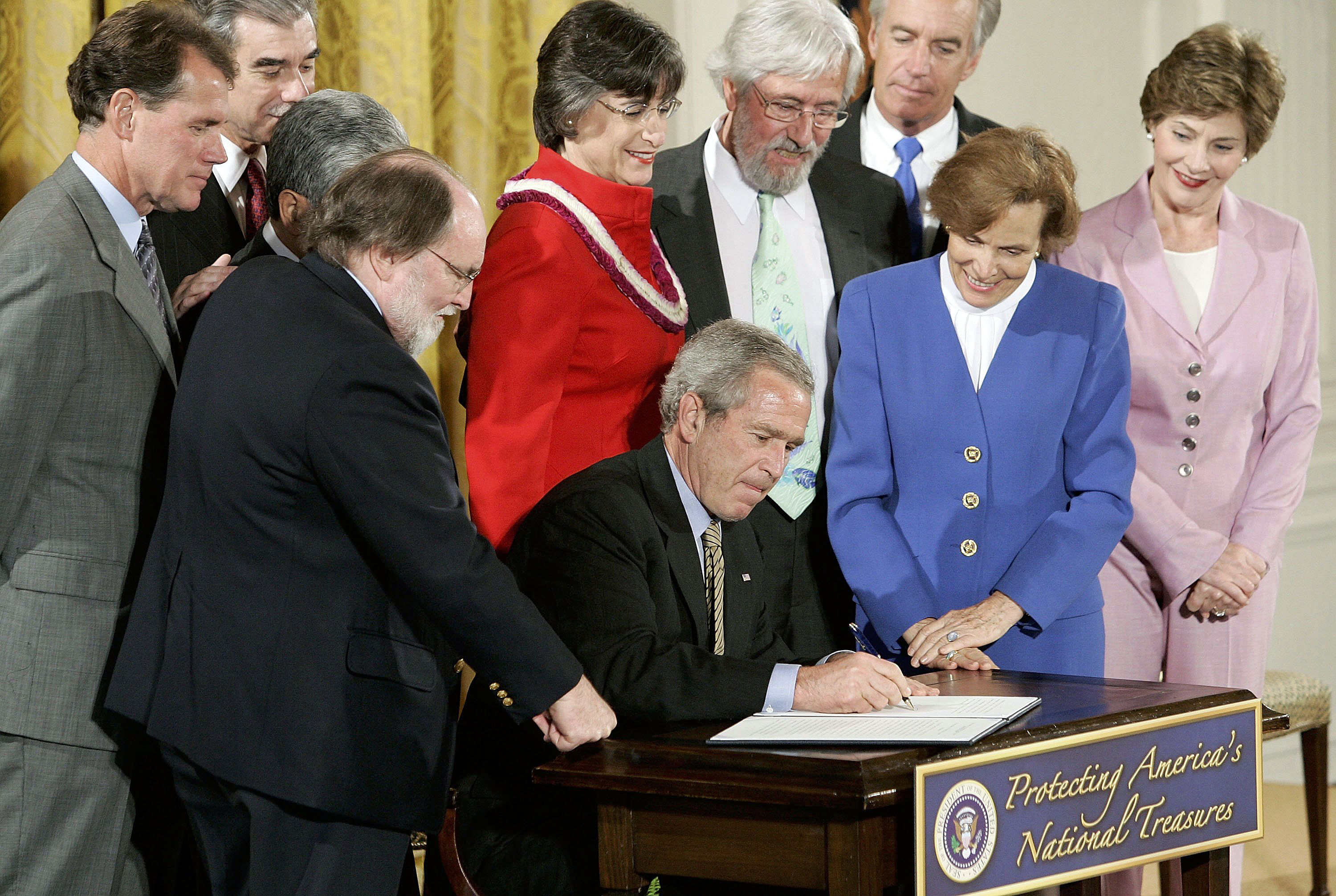Sylvia Earle: defender of the deep blue
The 83-year-old explorer and oceanographer has no plans to hang up her flippers just yet

Sylvia Earle, record-breaking explorer and marine biologist, has dedicated her life to understanding and protecting the deepest oceans. Still a passionate conservationist, researcher and diver at the age of 83, she has led more than 100 expeditions worldwide, logging more than 7,000 hours underwater.
“People look at how old I am and say, ‘Are you still diving?’” she told The Daily Telegraph last year. “I say, ‘I’m still breathing, so of course I’m diving and doing everything I can to get others to jump in themselves.’”
As one of the world's best-known oceanographers and a National Geographic explorer-in-residence, Earle has become “the face of marine biology,” according to former US vice president and environmentalist Al Gore. “She has taken a lifetime to make herself an expert in a topic that is central to the future of human civilisation,” he told Glamour magazine.
The Week
Escape your echo chamber. Get the facts behind the news, plus analysis from multiple perspectives.

Sign up for The Week's Free Newsletters
From our morning news briefing to a weekly Good News Newsletter, get the best of The Week delivered directly to your inbox.
From our morning news briefing to a weekly Good News Newsletter, get the best of The Week delivered directly to your inbox.
Richard Branson, who worked with Earle on the OceanElders marine conservation project, said the experience of diving with her was unlike any other. “It felt like I was swimming with a mermaid who loved and cared for every living being,” the business mogul and philanthropist said.
She is also supported in her work by Rolex, but even prior to their collaboration, her own admiration for the company’s watches goes back even further – to the moment she spotted one on the wrist of her diving partner.
“I thought she had forgotten to take off her watch, but she just gave me this smile,” Earle explains. “Only then I saw that it was a Rolex and it was quite capable of diving, not just as deep as we were at the time, but it could go much deeper. And yet it could go to black tie parties, it could go out in the rain, it could go in the shower, it could become — as it has become for me, when I got the same one soon after — just an extension of me, something I would wear all the time, everywhere. It’s like having that sixth sense right there on your arm, as your guide.”
Rolex’s support for Earle and her work now dates back five decades. The company is now a premier partner of Mission Blue, her global initiative to identify and protect “hope spots” — areas of the ocean that are critical to the health of our planet.
Earle spent her childhood exploring the woodlands near her family’s farm in New Jersey before moving to Florida in her early teens. It was here, with the Gulf of Mexico on her doorstep, that her love and respect for the ocean began to flourish. “It was paradise,” she says. “I wanted to learn everything I could about these plants and animals.” Since her first dive, aged just 16, Earle estimates she has spent close to a year of her life underwater.
But as a woman working in the macho world of deep-sea diving during the 1950s, Earle often faced rejection. While in graduate school at Duke University, she was denied a teaching assistantship because it was assumed she would get married, have children and give up her work. The positions were reserved for men “who will make use of their education,” Earle was told.
In 1969, Earle applied for Nasa’s first Tektite project, which was planning to send scientists to live on the seafloor for weeks at a time. “Despite having racked up more hours underwater than the male scientists who applied, she was rejected,” Vanity Fair reports. “The organisers couldn’t envisage the concept of men and women cohabiting in isolation for so long.”
Earle worked hard to confront such attitudes and her persistence paid off. The following year she led the first all-female team of aquanauts in the Tektite II project. But instead of focusing on her achievements or research, “the media used to ask me questions about my hair and lipstick,” the oceanographer told National Geographic. “But I realised, at least I had their attention, so I would use that to tell the story of the ocean.”
In the decades that followed, Earle achieved unparalleled success in her field and went on some of the deepest and most-challenging dives in history. In 1979, she broke the world record for the deepest untethered dive, and went on to set the women’s solo dive record in 1986 in a submersible she helped design, earning herself the nickname “Her Deepness”. She became the first woman to serve as chief scientist at the National Oceanic and Atmospheric Administration and earned a Carl Sagan Award for Public Understanding of Science.

Earle, to the right of US President George W Bush, signing a bill to create the world’s largest marine protected area off the coast of Hawaii in 2006
In 2010, with a $100,000 Ted prize and a million-dollar grant from IT business executive benefactor Addison Fischer, Earle established the Mission Blue alliance, which aims to build a network of areas of the ocean that require extra protection, known as “Hope Spots”. Currently, less than 5% of the world’s oceans are protected, but Mission Blue aims to extend that to 10% by 2020.
“For the first - and maybe the last - time in history, we have a chance to make peace with the ocean and the rest of the living world, and in so doing, secure an enduring place for ourselves on this small blue part of the universe,” Earle says.
Despite the disastrous effects overfishing and pollution have had on the world’s oceans, Earle believes it’s not too late to reverse the damage humans have done. “There’s still time,” she told the Financial Times. “There are species that are gone forever, and the chemistry of the ocean has changed, the ecosystems are damaged, but we can stabilise things to prevent further damage. We can and we must.”
Whether it’s cutting seafood from our diets, pressuring our leaders to protect marine ecosystems, or simply educating ourselves and our children about the ocean, “everyone can do something,” Earle insists. “Not everyone can do everything, but everyone can do something to make a difference.”
Discover more on Rolex.com
A free daily email with the biggest news stories of the day – and the best features from TheWeek.com
-
 ‘Care fractures after birth’
‘Care fractures after birth’instant opinion Opinion, comment and editorials of the day
-
 Shots fired in the US-EU war over digital censorship
Shots fired in the US-EU war over digital censorshipIN THE SPOTLIGHT The Trump administration risks opening a dangerous new front in the battle of real-world consequences for online action
-
 What will the US economy look like in 2026?
What will the US economy look like in 2026?Today’s Big Question Wall Street is bullish, but uncertain